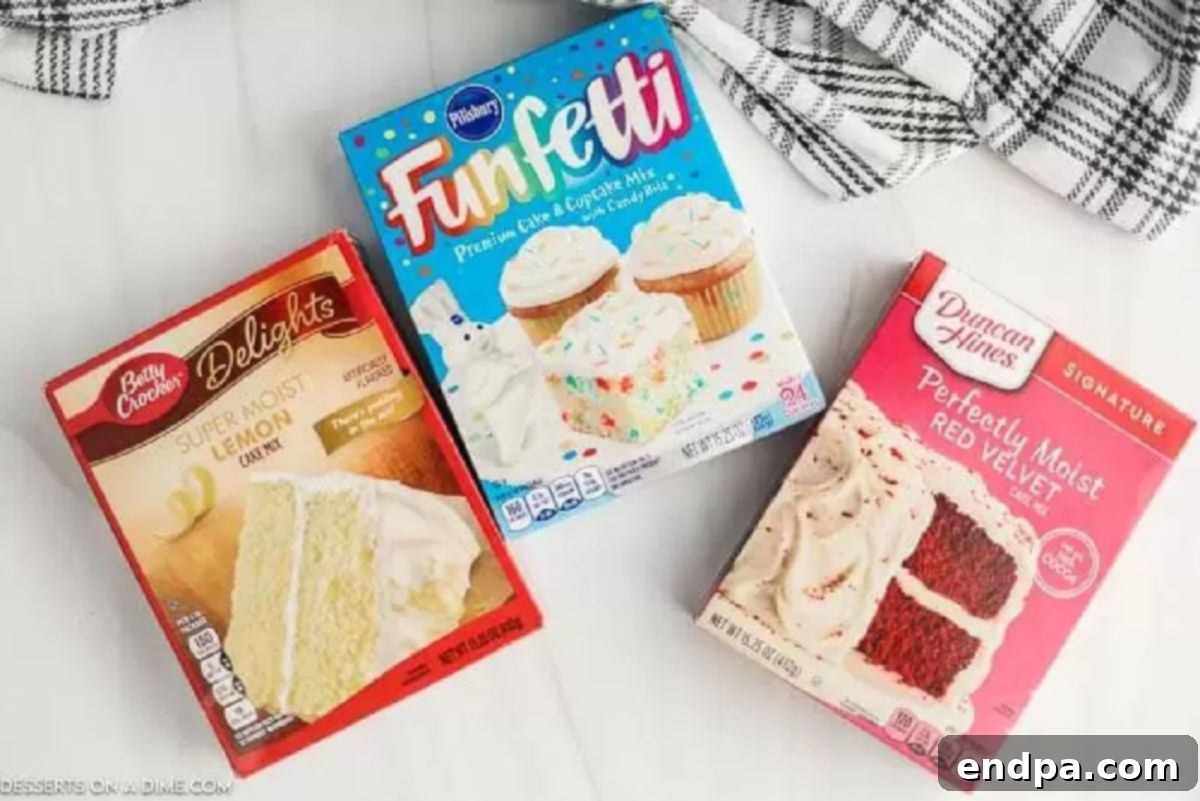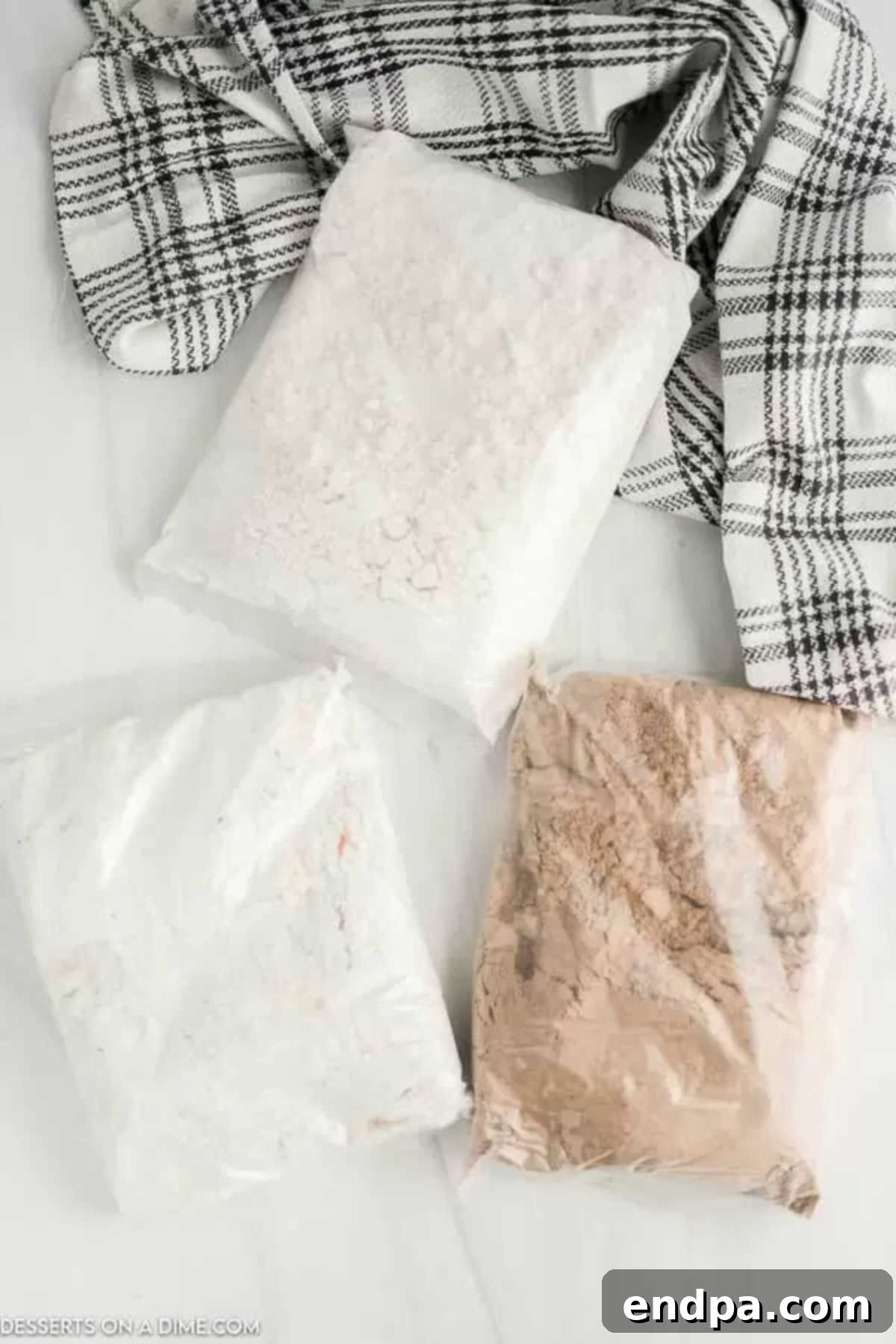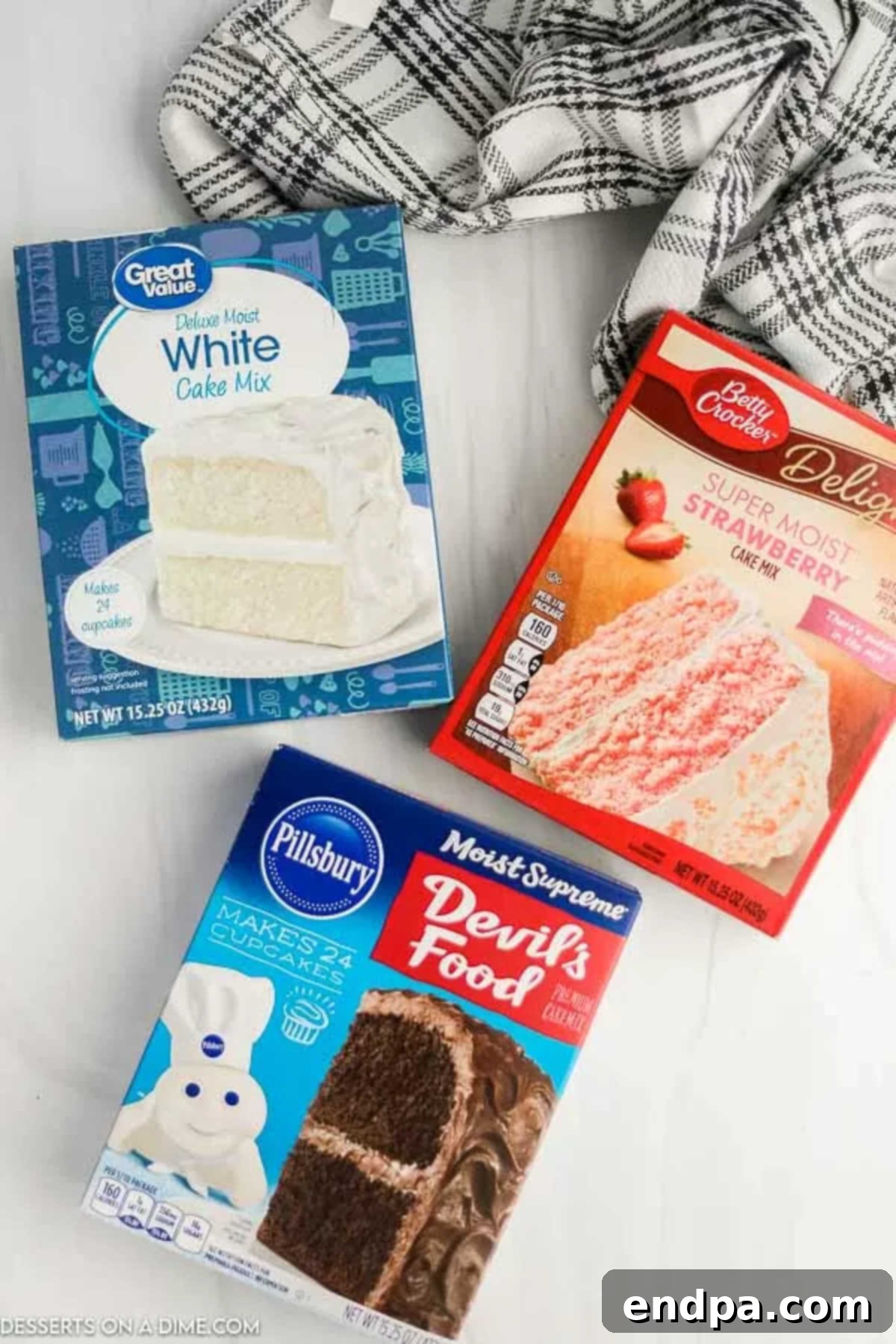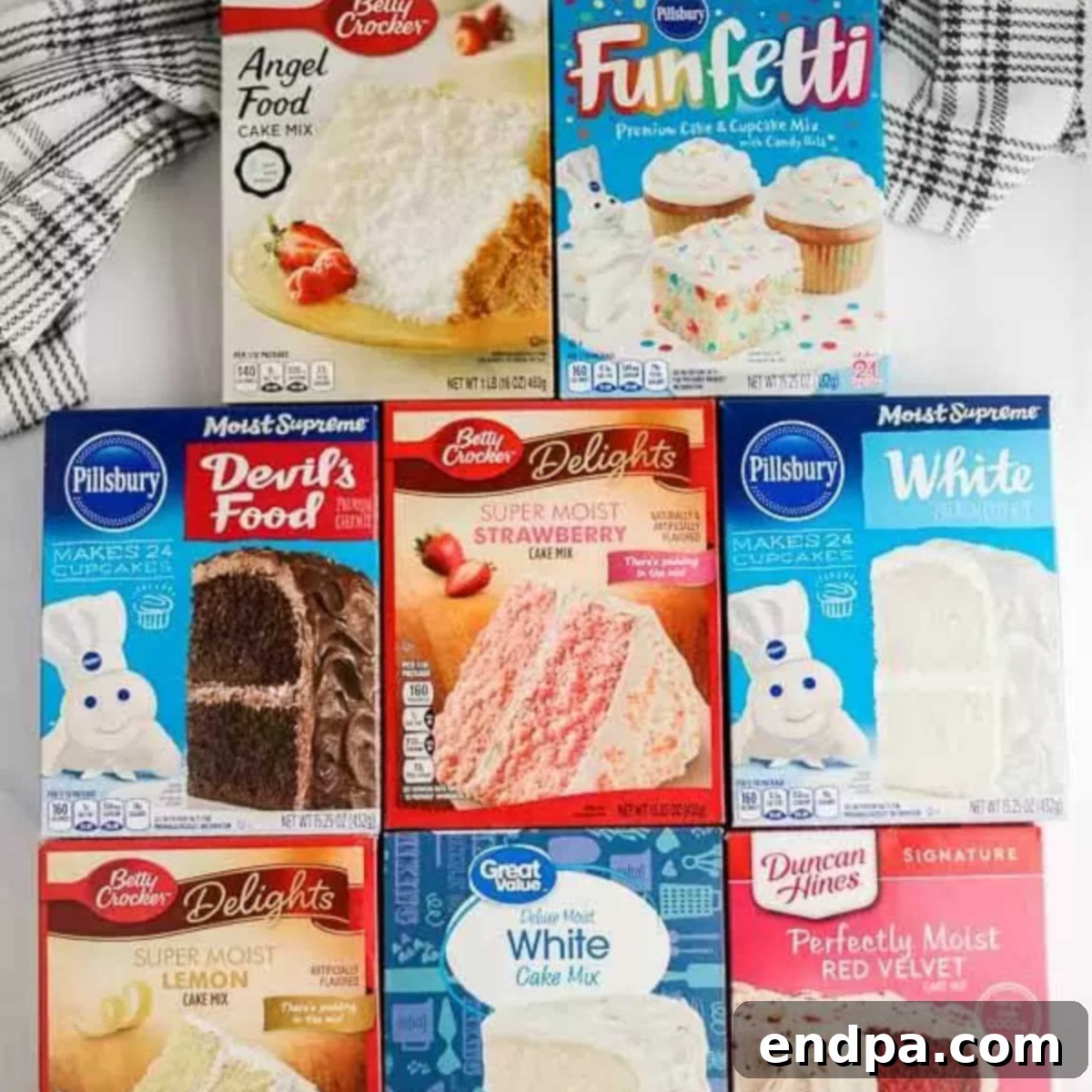Does cake mix go bad? This is a frequently asked question by home bakers, often sparked by finding an old box tucked away in the pantry. Many people mistakenly believe that because cake mix is a dry, packaged product, it has an indefinite shelf life. However, this isn’t true. Like virtually all food items, cake mix does indeed expire or, more accurately, lose its peak quality over time. Understanding its shelf life is crucial for ensuring your baked goods turn out perfectly every time and for maintaining food safety.

Whether you’re a seasoned baker who always keeps several boxes on hand or someone who only bakes for special occasions, knowing the nuances of cake mix longevity can prevent a lot of frustration. Nobody wants to invest time and ingredients into baking a cake only to have it fall flat or taste off. This comprehensive guide will provide you with all the essential information on cake mix shelf life, proper storage methods, and critical signs of spoilage. Use these suggestions before you make your next cake recipe, ensuring your culinary creations are consistently delicious and safe to enjoy.
Table of Contents: The Definitive Guide to Cake Mix Shelf Life
- How Long Does Cake Mix Last? Decoding “Best By” Dates
- The Science Behind Cake Mix’s Longevity
- Proper Storage for Cake Mix: Maximizing Freshness
- Can You Freeze Cake Mix? Understanding the Impact on Leavening
- Homemade Cake Mix: A Fresher, Shorter Lifespan
- Detecting Spoilage: Unmistakable Signs Your Cake Mix Has Gone Bad
- Risks of Using Expired Cake Mix
- Expert Tips for Extending Cake Mix Longevity
- Try Our Homemade Cake Mix Recipe
- Inspiring Recipes Using Cake Mix
How Long Does Cake Mix Last? Decoding “Best By” Dates
The first step in determining the freshness of your cake mix is to check the packaging for a “Best If Used By,” “Best By,” or “Expiration Date.” It’s important to understand the subtle difference between these terms. A “Best By” date typically indicates when a product is expected to be at its peak quality, flavor, and texture, not necessarily when it becomes unsafe to consume. For dry goods like cake mix, this date is a guideline for optimal performance.
When stored correctly, an unopened, store-bought cake mix can maintain its quality for a substantial period, typically 12 to 18 months from the date of manufacture. Manufacturers formulate these mixes with stability in mind, using carefully balanced dry ingredients and protective packaging.
However, many home bakers find that cake mix can still be perfectly usable for an additional 4-5 months beyond its “Best By” date. While food companies do not officially endorse using their products past the printed date for liability reasons, the reality for a dry mix is often more flexible. The ingredients degrade slowly, meaning a slightly past-date mix might still yield good results. Nevertheless, using a mix significantly past this extended window increases the risk of a subpar cake. The convenience of a cake mix is undeniable, but the ultimate goal is to ensure the food product is safe to eat and will produce the delicious results you expect.

The Science Behind Cake Mix’s Longevity
To truly grasp why cake mix has a finite lifespan, it helps to delve into its fundamental components. A typical boxed cake mix comprises several key dry ingredients, each contributing to its overall quality and eventual degradation:
- Flour: This is the primary bulk ingredient. While flour itself is quite stable, it can absorb moisture from the environment, leading to clumping and potentially making it susceptible to pantry pests. The natural oils in flour can also eventually go rancid, though this takes a considerable amount of time for refined flours typically used in mixes.
- Sugar: An excellent natural preservative, sugar is highly stable. Its main vulnerability is moisture, which can cause it to clump and harden.
- Leavening Agents (Baking Powder/Baking Soda): These are arguably the most sensitive and critical ingredients. Baking powder and baking soda are designed to react with liquid and heat (or acid) to produce carbon dioxide gas, creating the airy, fluffy texture of a cake. Over time, and especially with exposure to humidity or heat, these agents can lose their chemical potency, failing to produce enough gas to make your cake rise. This is the most common reason an old cake mix fails.
- Fats (Powdered Oils/Shortening): Some cake mixes include powdered fats or emulsifiers to enhance texture and moisture. These fats are prone to oxidation, which leads to rancidity, manifesting as an off-putting smell and taste.
- Flavorings and Spices: While less critical for structural integrity, dried flavorings and spices also lose their aromatic compounds over extended periods, leading to a less flavorful cake.
The gradual breakdown or loss of effectiveness of these components, particularly the leavening agents and any fats, is what causes cake mix to “go bad” and ultimately impacts the quality and taste of your baked cake.
Proper Storage for Cake Mix: Maximizing Freshness
The longevity and quality of your cake mix are heavily dependent on how it’s stored. Adhering to proper storage conditions is the best way to safeguard its freshness and ensure successful baking experiences.

- Unopened Mixes: The Ideal Pantry Environment. For unopened boxes or bags, the best place for storage is a cool, dry, and dark pantry or cabinet. Room temperature, typically between 60-75°F (15-24°C), is ideal. It’s crucial to keep mixes away from sources of heat, such as ovens, stovetops, dishwashers, or sunny windows. Heat can accelerate the degradation of leavening agents and fats. Humidity is another major enemy, as it can cause ingredients to absorb moisture, leading to clumping, mold growth, and a reduction in leavening power. Direct sunlight should also be avoided, as it can cause ingredients to break down faster.
- Once Opened: Airtight Protection is Non-Negotiable. The moment you break the seal on a cake mix package, its vulnerability to external elements significantly increases. To maintain its quality, transfer any unused mix immediately into an airtight container or a heavy-duty, sealable plastic bag. This creates an essential barrier against moisture, oxygen, and potential pantry pests. Glass jars with tight-fitting lids or rigid plastic containers are excellent choices.
- Consider Refrigeration for Opened Mixes (with Caution). While not strictly necessary for most dry cake mixes, storing an opened, tightly sealed container of cake mix in the refrigerator can offer a slight extension of its life, particularly in extremely hot and humid climates. However, be mindful of the refrigeration environment itself: it can sometimes introduce moisture through condensation if the container isn’t perfectly sealed, potentially leading to clumping. Ensure your container is absolutely airtight to prevent moisture absorption and odor transfer from other foods in the fridge.
- Guard Against Pantry Pests. Dry goods like cake mix are attractive to common pantry pests such as weevils and pantry moths. Storing your mixes in robust, sealed containers acts as a formidable defense, preventing these unwelcome invaders from contaminating your ingredients.
By diligently following these storage recommendations, you can substantially prolong the effective shelf life of your cake mix, guaranteeing it remains potent and ready to deliver delicious results whenever your baking inspiration strikes.
Can You Freeze Cake Mix? Understanding the Impact on Leavening
While it is technically possible to place a box of cake mix in the freezer, it is generally not advised or recommended for several important reasons. The primary concern revolves around the delicate and moisture-sensitive nature of the leavening agents, such as baking powder and baking soda, which are crucial for a cake’s rise and texture.
When cake mix is exposed to the extreme cold of a freezer, and subsequently goes through the thawing process, any residual moisture within the mix, even trace amounts, can crystallize and then re-liquefy. This fluctuating moisture can severely compromise the chemical integrity and efficiency of the leavening agents. The result? When you eventually use that frozen and thawed mix, your cake is highly likely to suffer from a poor rise, leading to a dense, flat, and unappealing texture instead of the light, fluffy crumb you desire.
Beyond the leavening, freezing can also negatively impact the flour component of the mix. It might lead to undesirable clumping or a change in the flour’s structure, which can further detract from the final baked product’s texture. The overall quality of a cake prepared from a previously frozen mix is almost invariably inferior to one made from properly stored, unfrozen mix.
If your aim is to extend the life of a baked good, a far more effective and recommended strategy is to bake the cake as usual and then freeze the finished, cooled cake. Most baked cakes and cupcakes freeze exceptionally well and can be thawed and enjoyed at a later date without any significant loss of texture, moisture, or flavor.
Homemade Cake Mix: A Fresher, Shorter Lifespan
For individuals who enjoy tailoring their ingredients, avoiding certain additives, or simply prefer the satisfaction of baking from scratch, creating your own homemade cake mix is an excellent alternative. However, it is essential to recognize that homemade versions come with a significantly shorter shelf life compared to their commercially produced counterparts.
Store-bought cake mixes are often engineered with specific preservatives and packed in controlled environments designed to maximize their longevity. Homemade mixes, made from fresh, natural ingredients, do not benefit from these extended preservation techniques. Consequently, a homemade cake mix will typically remain fresh and effective for a maximum of one month when stored meticulously.
When you prepare your own mix, ensure that you exclusively combine dry ingredients. It is critically important never to incorporate liquid or perishable components such as eggs, butter, milk, or oil into a mix intended for storage, as these will spoil rapidly and create an unsafe environment for bacterial growth. Store your homemade mix in a scrupulously clean, airtight container—ideally a glass jar with a robust seal or a high-quality plastic container. Always clearly label the container with the date it was prepared to easily monitor its freshness and ensure timely use.
While the reduced shelf life of homemade cake mix necessitates a bit more foresight and planning, the numerous advantages—including complete control over ingredients, customization of flavors, and the inherent satisfaction of a truly “from scratch” bake—often make it a worthwhile endeavor for many passionate bakers.
Detecting Spoilage: Unmistakable Signs Your Cake Mix Has Gone Bad
Even if your cake mix hasn’t technically reached its “best by” date, improper storage, environmental conditions, or damaged packaging can lead to premature spoilage. Knowing how to accurately identify a bad cake mix is paramount for both ensuring food safety and preventing wasted baking efforts. Here are the definitive indicators to watch for:
- Lack of Rise During Baking: This is one of the most definitive and common signs that your cake mix is past its prime. It specifically points to the leavening agents (baking powder or baking soda) having lost their potency. If you bake a cake and it comes out notably flat, dense, or fails to expand and achieve the expected volume, it’s a strong signal that your mix is expired or has degraded. After all the effort, no one wants a cake that doesn’t rise!
- Off-Putting Odor: A fresh cake mix typically possesses a faint, pleasant, or neutral scent. If upon opening the box or bag, you detect any strange, sour, musty, rancid, or chemical-like smell, it is a clear and unequivocal sign of spoilage. A rancid aroma often indicates that any small amount of fat or oil in the mix has oxidized. Always trust your sense of smell – if it smells wrong, it undoubtedly is.
- Visual Changes and Contamination:
- Discoloration: Observe the color of the mix carefully. Noticeable changes such as yellowing, browning, or a grayish tint are strong indicators of degradation. The mix should maintain its original, uniform color.
- Mold Growth: This is an undeniable and critical sign of spoilage. Any visible mold, regardless of its size or color, means the entire mix is severely compromised and must be discarded immediately. Mold flourishes in moist environments, so its presence often highlights improper storage conditions.
- Excessive Clumping or Hardening: While some minor clumping can occur, especially in humid conditions, if the mix is significantly hardened, forms large, solid, and unbreakable clumps, or feels unusually dense, it has likely absorbed too much moisture and is no longer suitable for baking.
- Pest Infestation: Discovering any tiny insects, larvae (such as pantry moths or weevils), or their droppings within the cake mix is an absolute sign of contamination. These common pantry pests are attracted to grains and dry goods. Always inspect your mix thoroughly, particularly if it has been stored for an extended period or if the packaging shows any signs of damage.
- Beyond the Date: Always Conduct a Physical Check: While the “best by” date serves as a useful guideline, it is not a guarantee. A mix can spoil prematurely if it’s not stored correctly, or if its original packaging was compromised. Conversely, a mix that is slightly past its “best by” date might still be perfectly fine if it has been stored under optimal conditions. Therefore, it is always prudent to perform a quick visual and olfactory inspection of your cake mix, irrespective of the date printed on the box.
When in doubt, just toss it. If there is any indication of spoilage or even a lingering doubt about the freshness or safety of your cake mix, it is unequivocally best to err on the side of caution and discard it. Attempting to use a questionable mix is simply not worth the risk of an unpalatable cake, potential foodborne illness (though rare for dry goods unless mold/pests are present), or the sheer disappointment of wasted ingredients and effort. Manufacturers strongly advise against attempting to “revive” an old mix by adding extra baking powder or other leavening agents; once the primary leavening capability has failed, the entire delicate balance of the mix is irrevocably altered. At this point, it is truly best to replace the expired or spoiled mix with a fresh one.

Risks of Using Expired Cake Mix
While using a cake mix that’s slightly past its “best by” date might not always lead to severe health risks (especially if there are no visible signs of mold or pests), there are definite and undesirable consequences:
- Poor Baking Results: This is the most common and disappointing outcome. As discussed, the weakened leavening agents often result in a cake that doesn’t rise, possesses a dense or crumbly texture, and lacks the expected lightness. Your time and effort in the kitchen are wasted on a subpar dessert.
- Unpleasant Taste and Aroma: If any fats in the mix have oxidized and gone rancid, the cake will likely have an off-putting, stale, bitter, or chemical taste and smell. This can ruin the entire dessert, making it inedible.
- Potential Foodborne Illness (Rare but Possible): If the cake mix has been exposed to excessive moisture and has developed mold or significant bacterial growth, consuming the baked product could potentially lead to digestive upset, nausea, or more serious foodborne illness. While less common for dry mixes than for fresh perishable foods, it is a risk that is simply not worth taking.
- Wasted Ingredients and Effort: Beyond the cake mix itself, you’ll likely use fresh eggs, oil, milk, and potentially expensive frosting and decorations. All these valuable ingredients, along with your precious baking time, will be wasted if the foundation – the cake mix – is compromised.
For these compelling reasons, it is always the best policy to prioritize the freshness and quality of your cake mix. The minimal cost savings of using an old mix rarely justifies the potential disappointment of a ruined dessert or, in worse cases, the risk to health.
Expert Tips for Extending Cake Mix Longevity
Incorporating a few simple habits into your baking routine can significantly enhance the longevity and reliability of your cake mixes:
- Practice “First In, First Out” (FIFO): A classic pantry organization strategy, FIFO means placing newly purchased items at the back of your shelves and moving older items to the front. This ensures you use the oldest mixes first, well before they approach or exceed their “best by” dates.
- Label Everything Clearly: If you transfer opened cake mix into a storage container, always label it with a permanent marker. Include the original “best by” date from the box and the date you opened the package. For homemade mixes, clearly note the date of preparation. This simple step eliminates guesswork.
- Buy According to Your Needs: While bulk buying can be tempting, particularly when items are on sale, it’s generally wiser to purchase only as much cake mix as you realistically anticipate using within a reasonable timeframe. Overstocking often leads to excess product expiring before it can be used, contributing to food waste.
- Inspect Packaging Before Purchase: Always take a moment to examine the packaging of cake mix at the grocery store. Check for any tears, punctures, dents, or other signs of damage. Compromised packaging can expose the mix to air, moisture, and pests, significantly reducing its shelf life even before you bring it home.
- Consider DIY for Ultimate Freshness: If you frequently find yourself discarding expired store-bought mixes or prefer baking with the freshest ingredients, consider making smaller batches of homemade cake mix as needed. This approach guarantees maximum freshness for each baking session and allows for complete control over ingredients.
By integrating these thoughtful practices into your culinary routine, you can substantially minimize waste, maximize the quality of your ingredients, and ensure that every cake you bake starts with the absolute best possible foundation.
Try Our Homemade Cake Mix Recipe
Inspired to take control of your cake ingredients? Discover the satisfaction and versatility of preparing your very own cake mix from scratch. It’s an excellent way to customize flavors, ensure fresh components, and know exactly what goes into your delicious baked goods.
Get the Homemade Cake Mix Recipe Here
Inspiring Recipes Using Cake Mix
Now that you’re an expert on cake mix shelf life and storage, it’s time to put your perfectly stored mix to good use! Here are some fantastic, easy-to-make recipes that beautifully showcase the versatility of a simple box of cake mix.
Cookies
Lemon Cake Mix Cookies: Zesty & Easy Treat
Easy Brownie
Quick & Delicious Cake Mix Brownies
Cakes
